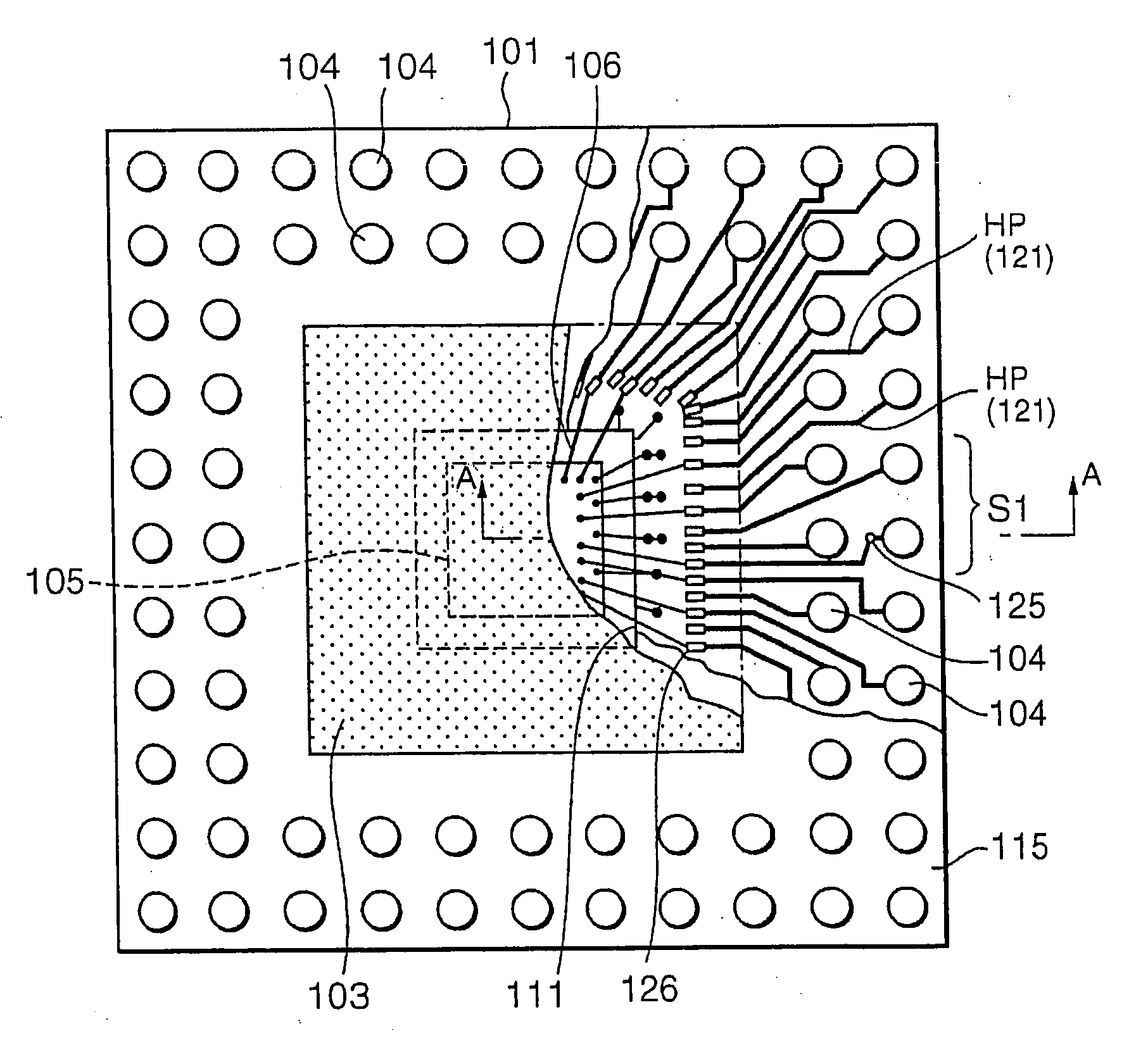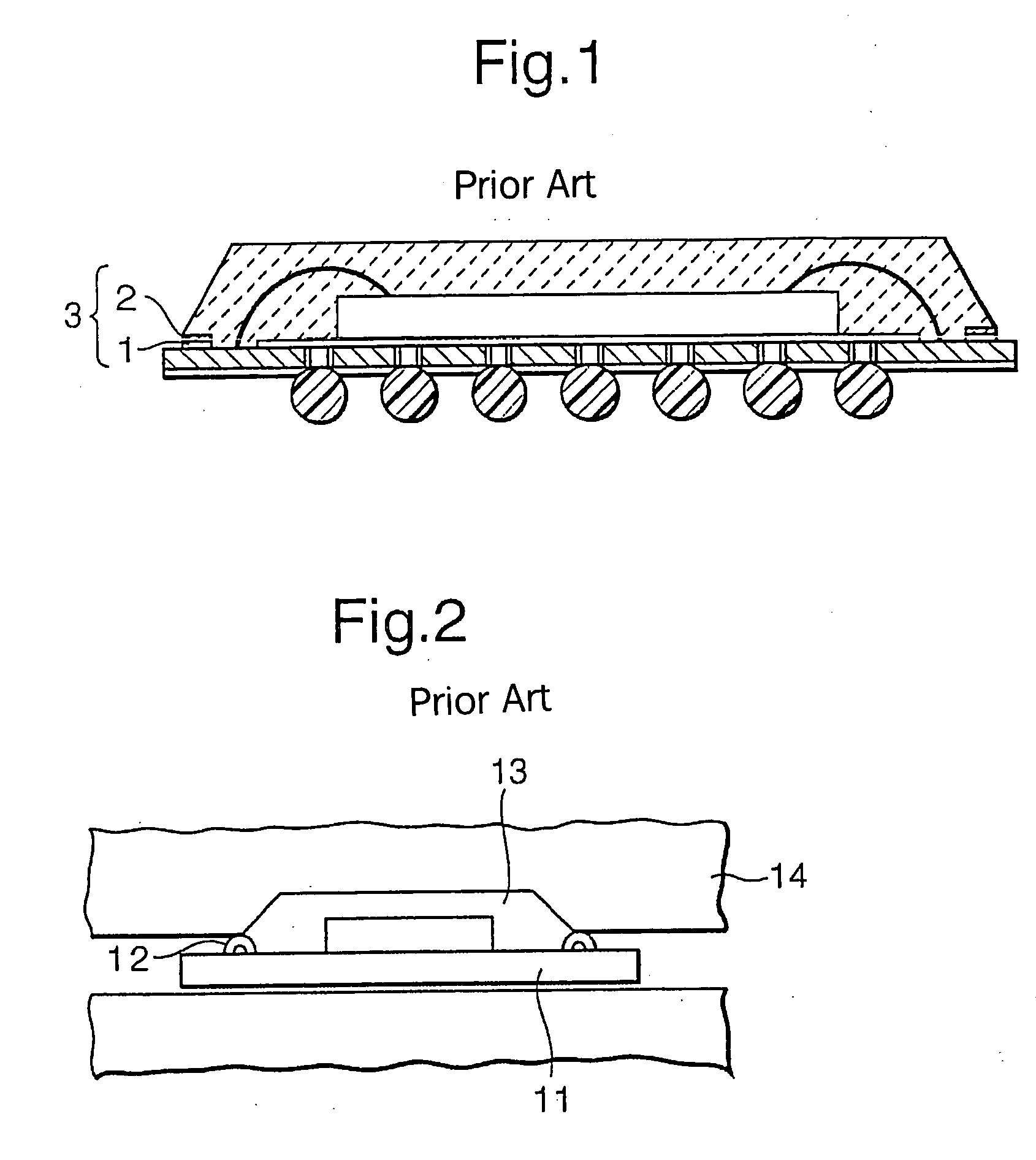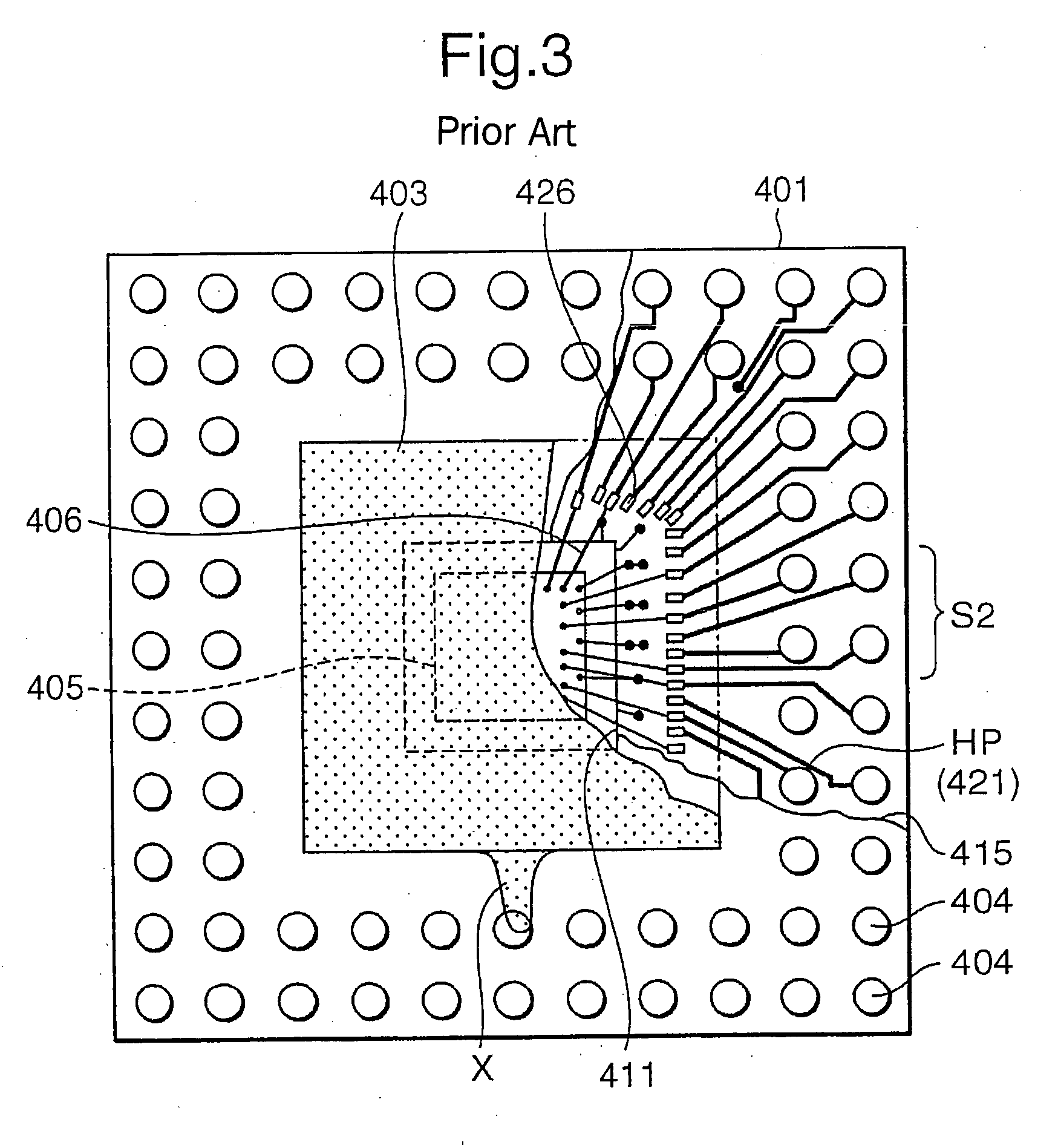Semiconductor device having resin-sealed area on circuit board thereof
a semiconductor device and resin-sealed technology, applied in the direction of semiconductor devices, semiconductor/solid-state device details, electrical apparatus, etc., can solve the problem of increasing the cost of the semiconductor device attributable to the additional step, affecting the step, and the leakage of resin cannot be effectively prevented, so as to prevent the occurrence of poor connection of solder balls
- Summary
- Abstract
- Description
- Claims
- Application Information
AI Technical Summary
Benefits of technology
Problems solved by technology
Method used
Image
Examples
first embodiment
[0037] Referring to the accompanying drawings, the present invention will be explained in detail.
[0038]FIG. 7 is a schematic perspective view of an embodiment in which the present invention has been applied to an ABGA type semiconductor device; FIG. 8 is a plan view of the semiconductor device with a part of a sealing resin cut away; FIG. 9 is an enlarged plan view of an essential area S1 shown in FIG. 8; FIG. 10 is an enlarged sectional view taken at the line A-A shown in FIG. 8; and FIG. 11 is an enlarged sectional view wherein a part along the line B-B shown in FIG. 9 has been omitted.
[0039] Referring to FIG. 7, the ABGA type semiconductor device has a heat spreader 102 integrally attached to the bottom surface of a circuit board 101, the heat spreader 102 being constructed of a metal plate having high thermal conductivity. A molded sealing resin 103 is provided in the central area of the circuit board 102 to seal a semiconductor chip or the like, which will be discussed hereina...
third embodiment
[0049] A third embodiment in accordance with the present invention will be described in detail with reference to relevant drawings. Referring to FIG. 13, the density of wiring patterns HP is low in the area wherein the number of the wiring patterns HP per unit area is small, as in the four-side area of the circuit board 101, and it is difficult to dispose the wiring patterns HP at the aforesaid interval dimension d. For this reason, a dummy wiring pattern DHP is formed between the wiring patterns HP so as to set the interval dimension d between the dummy wiring pattern DHP and the wiring pattern HP to 50% to 200% of an adjacent wiring interval at least in the molding line area MLA.
[0050] The dummy wiring patterns DHP are electrically connected to a power wiring layer of the third wiring layer 123 or a ground wiring layer or the like of the fourth wiring layer 124 via the through holes 126 to maintain a fixed potential state. The dummy wiring pattern DHP may be formed to be a wiring ...
PUM
 Login to View More
Login to View More Abstract
Description
Claims
Application Information
 Login to View More
Login to View More - R&D
- Intellectual Property
- Life Sciences
- Materials
- Tech Scout
- Unparalleled Data Quality
- Higher Quality Content
- 60% Fewer Hallucinations
Browse by: Latest US Patents, China's latest patents, Technical Efficacy Thesaurus, Application Domain, Technology Topic, Popular Technical Reports.
© 2025 PatSnap. All rights reserved.Legal|Privacy policy|Modern Slavery Act Transparency Statement|Sitemap|About US| Contact US: help@patsnap.com



